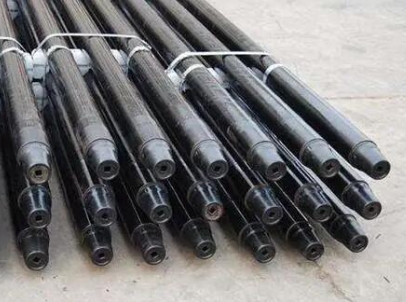
Classification Methods and Steel Grades for Drill Pipes
What is a drill pipe?
Drill pipe is a long, hollow steel tube used to rotate the drill bit and circulate drilling fluid in the well. The drill pipe can also be used as a conduit for introducing other downhole tools. It is a heavy, seamless, tubular steel pipe that is employed to connect the rig's surface equipment with the drill bit. Drill pipe is a vital component of a drilling rig used in oil and gas exploration and production.
Classification Methods of Drill Pipe
API Specification: The API Spec 5DP outlines the classification system for drill pipe, based on:
1. Grade: As mentioned earlier, it classifies the steel grade.
Weight: The weight per foot (lbs/ft) of the drill pipe.
Upset Type: Refers to the way the pipe is reinforced at the ends to accommodate threaded connections (e.g., Internal Upset (IU), External Upset (EU), and Internal-External Upset (IEU)).
Connection Type: Refers to the thread design, such as API Rotary Shouldered Connections (e.g., NC 38, NC 50) or proprietary connections.
2. Performance Properties: These include yield strength, tensile strength, and fatigue resistance. Pipes are tested and classified based on these properties, ensuring they meet the required performance for specific drilling environments.
3. Physical Dimensions:
OD (Outer Diameter): Common sizes include 2-3/8", 2-7/8", 3-1/2", and larger.
Wall Thickness: The thickness of the pipe wall, which affects the pipe’s strength and weight.
4. Condition Grades: Used pipes are classified based on their wear and remaining useful life: New (N), Premium (P), Class 2 (C2), Class 3 (C3): Represents a lower remaining life or more wear.

Steel grade of drill pipes
The steel grade classification of drill pipes mainly adopts API specifications (American Petroleum Institute) standards. API specifications set standards for drill pipe size, hardness, material composition, etc., making it easier for drilling teams to choose appropriate drill pipe in different geological environments. The common API steel grades include:
Grade E-75: The most basic grade, used for shallow wells and less demanding conditions.
Grade X-95: A medium-strength steel grade with better tensile properties than Grade E-75.
Grade G-105: A higher-strength grade, typically used in more demanding drilling operations.
Grade S-135: The highest strength standard grade, used in deep and difficult drilling conditions.
How to choose the appropriate drill pipe steel grade?
1. Well depth and complexity
According to factors such as drilling depth, wellbore size, well inclination, formation conditions, etc., select the appropriate drill pipe steel grade to meet the requirements of drilling construction.
2. Underground environment
Select drill pipe materials that can adapt to the underground environment, including the effects of ambient temperature, pressure, corrosive agents, etc.
3. Cost factors
The performance of drill pipe steel grade is directly related to its price. Choosing the appropriate steel grade can reduce costs as much as possible while ensuring safety and operating efficiency.
Read more: Steel Grade Difference between Drill Pipe and Oil Casing Pipe


